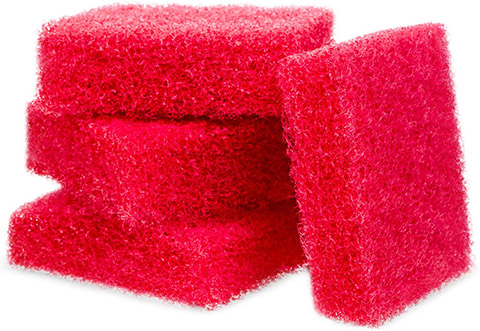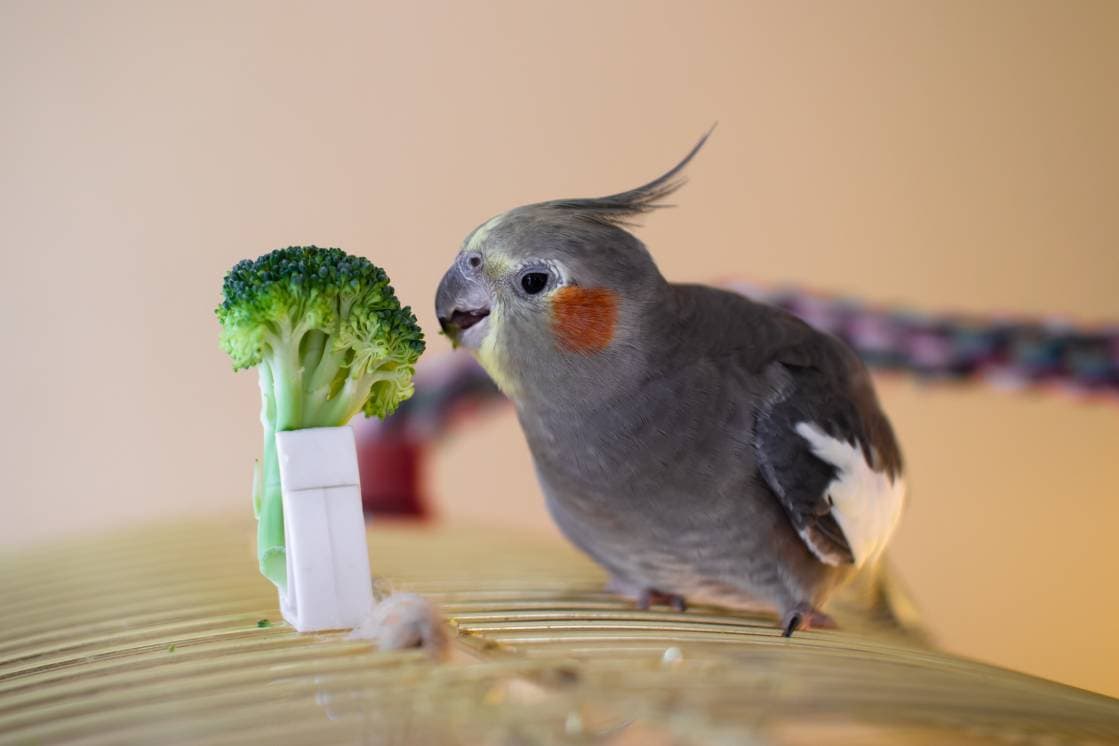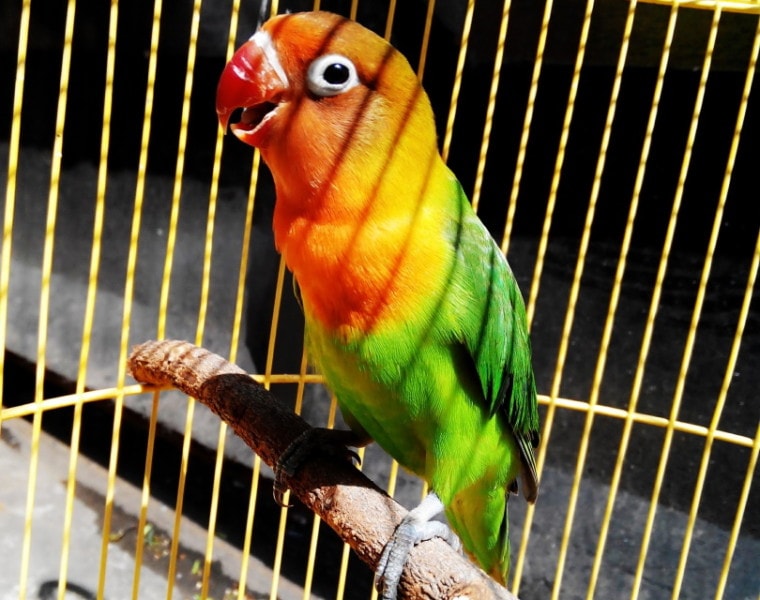
A bird owner’s most important job is the cleaning and maintenance of their pet’s cage. Cleaning the cage will not only keep your home tidy and smelling nice, but it will also prevent you from contracting any bird-related illnesses and your bird from falling ill. A responsible bird owner will try to clean the cage daily and perform more involved disinfecting tasks weekly and monthly.
If you’re a new bird owner and not sure where to start, we can help. Keep reading to find our thorough guide on cleaning your bird’s cage.
Gather Your Supplies
Before you start cleaning your bird’s cage, you need the right supplies.
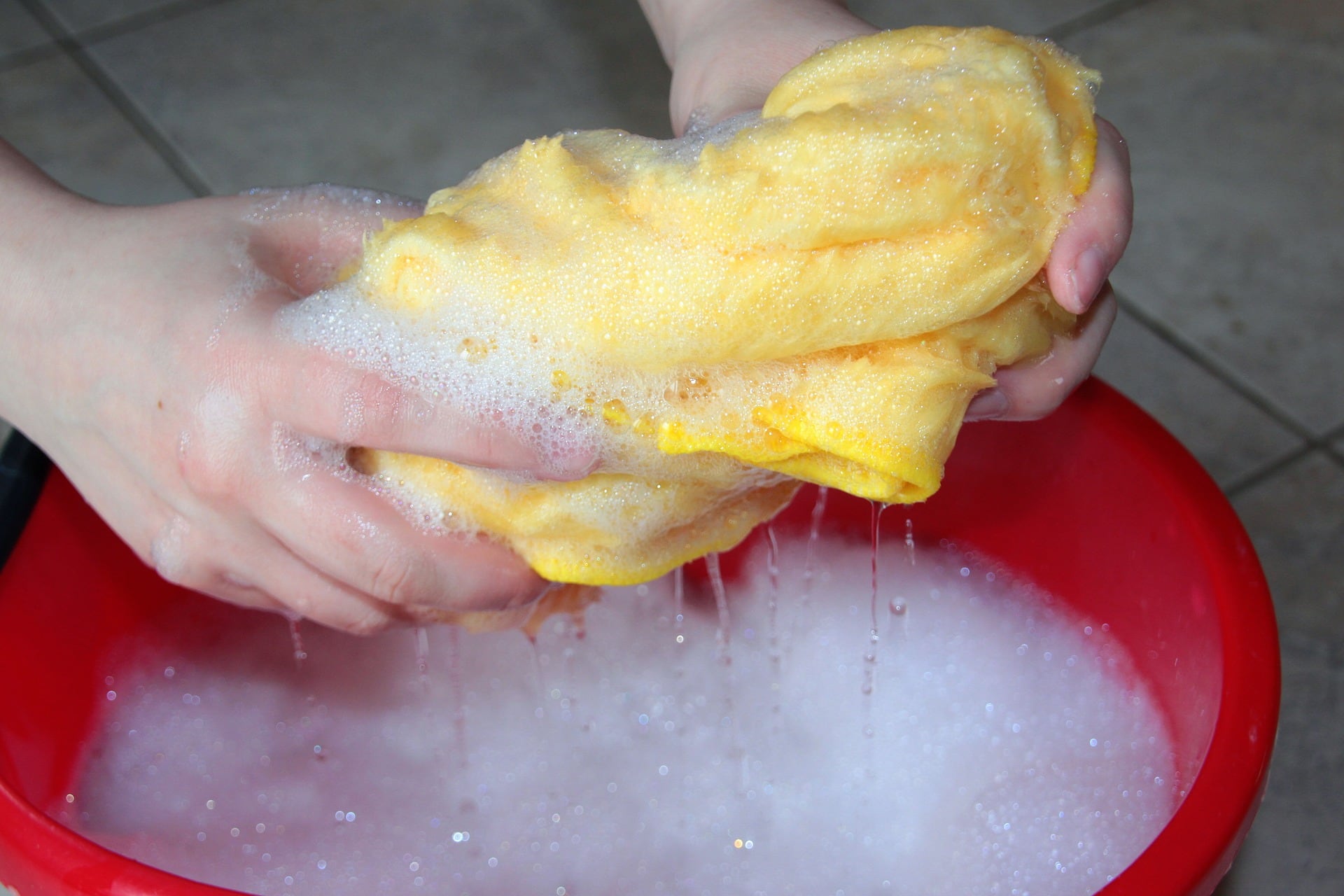
How to Clean & Maintain a Bird Cage
Daily Cage Cleaning Routine
Some cleaning tasks must be performed daily to minimize your bird’s risk of illness or infection.
1. Change the Liner
Most bird owners choose to use newspaper versus paper liners as it’s cheaper and puts the otherwise recycling-bound newspaper to good use. Changing the liner every day will provide you insight into their health. You can keep better tabs on your bird’s droppings on newspaper or liners versus other types of bedding.
2. Wash the Dishes
Your bird’s food bowl can become a breeding ground for bacteria. Some bacteria can double in as little as 20 minutes1 under the right temperature (between 40 °F and 140°F). Your pet’s room temperature is between these temperatures, so it’s imperative its bowl is washed out every day to prevent any illnesses.
This doesn’t only apply to food and snack dishes, though. The water dish must be removed and washed in hot soapy water. Let the bowls dry thoroughly before placing them back in the cage. You might consider buying a second set of dishes to give them plenty of time to dry.
Some dishes are dishwasher safe to make washing them even easier. You need to make sure that you’re using a bird-safe detergent.
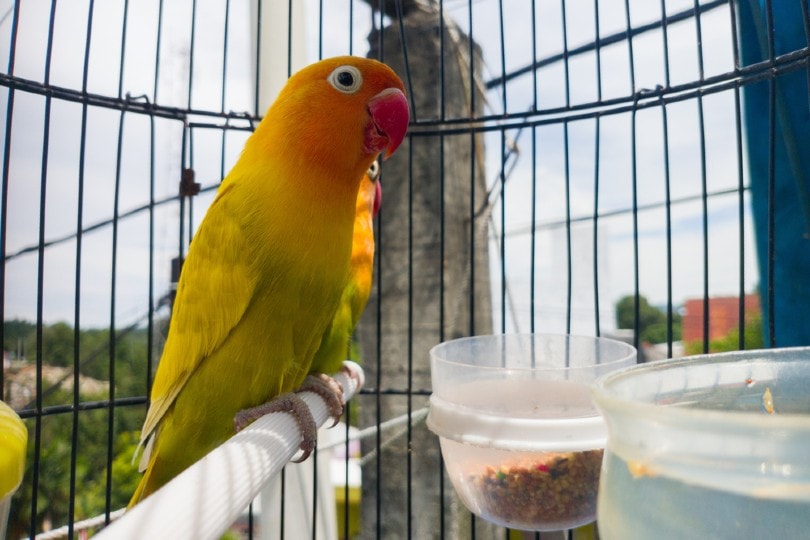
3. Clean Accessories
If your bird has a bath or ladders in its cage, you’ll need to add cleaning them to your daily list. Wash them in hot and soapy water or disinfectant. You may need to give them a good scrub if they’re covered in droppings.
Use a damp cloth to wipe down any other accessories your bird uses daily, such as bars and perches. If you notice dirtiness on the toys, you can also give them a wipe-down.
4. Clean the Surrounding Area
Be sure to give the area around your pet’s cage a good sweep daily. Your pet likely drops feathers, pellets, seeds, and snacks all over the floor, and it is in your best interests to clean it up as soon as possible. You might consider investing in a mat or cage apron to put the cage on so the entire floor won’t be covered in bird mess. If your bird’s cage is in a carpeted room, a plastic liner like those under office chairs will make clean-up a breeze.
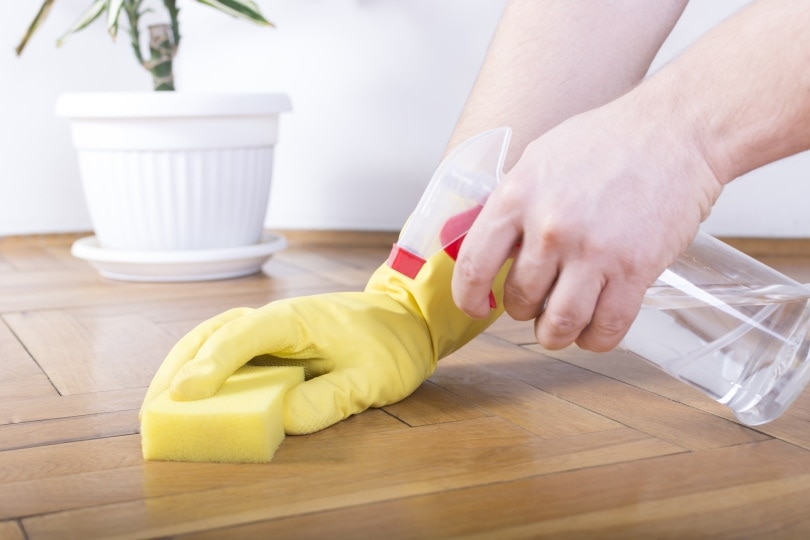
Weekly Cage Cleaning Routine
Choose one day each week to complete your weekly cage cleaning tasks. We recommend picking a day you’re off work so you won’t get sidetracked with other duties when you’re supposed to be taking care of business in your bird’s cage.
1. Wash the Tray
The tray at the bottom of your bird’s cage, where you place your liner, slides out. Remove it once a week and scrub it with a damp rag and a bird-specific cleaner. We like Nature’s Miracle’s Bird Cage Cleaner as it can easily tackle tough odors and caked-on debris (read: poop). Dry the tray thoroughly before sliding it back into place and setting down the new liner.
2. Scrub the Grate
Many bird cages have a grate hanging over the tray at the bottom. The grate allows droppings and food to fall through the cage to the liner on the tray below. To clean your grate, remove it and take it to your bathtub. A scrub brush will be your best friend for getting it all clean. Use hot, soapy water, and be sure to rinse off the grate well. Once it is completely dry, you can put it back in the cage.
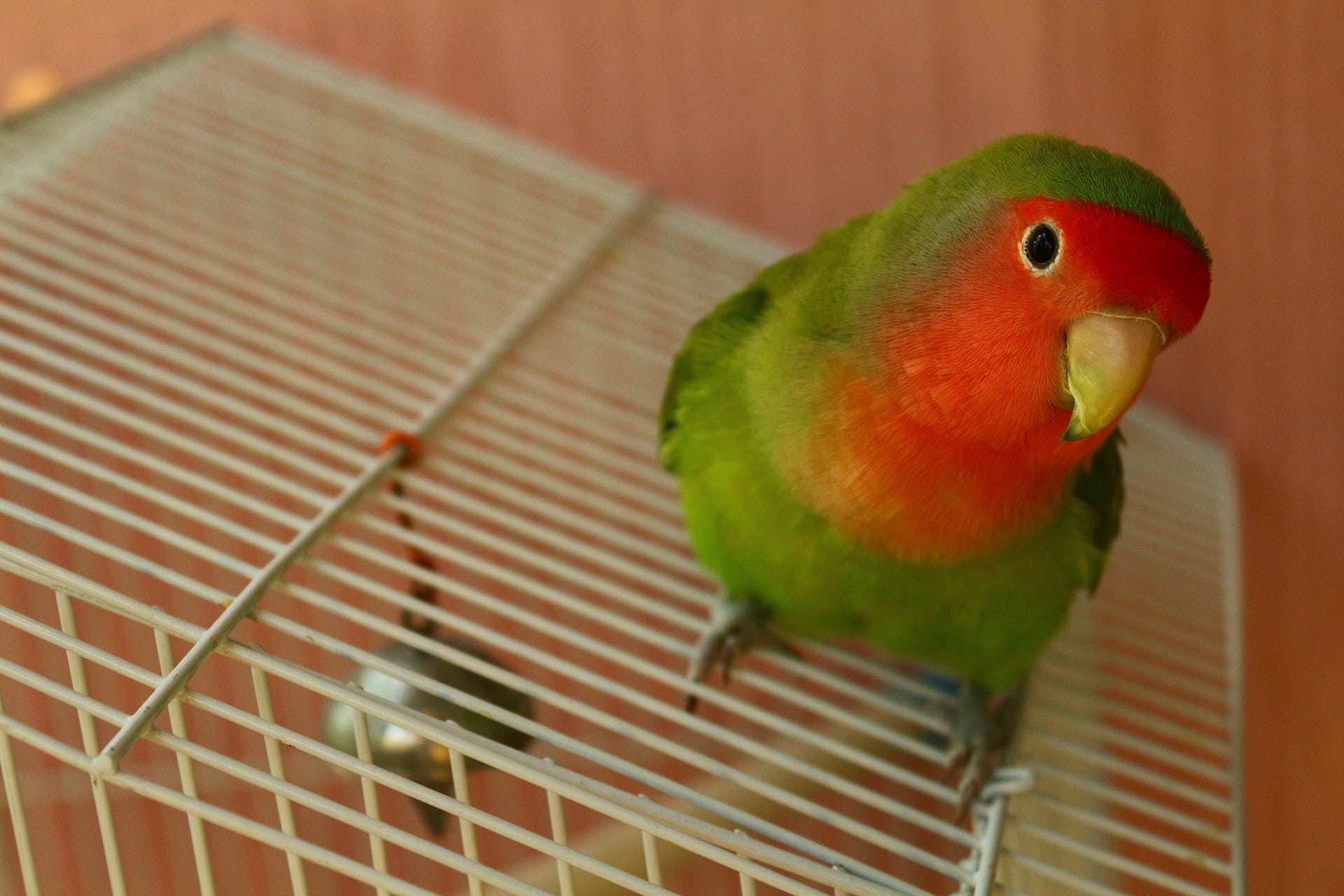
3. Swap Out Perches
It’s a good idea to swap out your perches weekly as they can accumulate waste and grow bacteria. In addition, swapping out perches often ensures your bird won’t get any sores on its feet, provided they vary in diameter.
Soak the dirty perches in hot water and scrub them to remove any dirt and waste accumulation. Wood perches take a very long time to dry once they get wet, so make sure you have extra perches you can place in the cage while they dry.
4. Rotate Toys
Rotating your bird’s toys weekly ensures they’ll never get bored and that its toys are always fresh and clean. Soak any plastic toys in hot, soapy water and scrub them to eliminate any dirt accumulation. Then, allow them to dry before putting them away.
Some toys may be dishwasher safe, but you should check with the manufacturer before putting them in your dishwasher.

Monthly Cage Cleaning Routine
Once every month, you should do a deep and thorough cleaning of your bird’s cage. You should remove your bird for the duration of the cleaning, placing them in a travel carrier or nighttime sleep cage. Do not put your bird back until you’re positive the cage is completely rinsed free of any cleaner and dry.
1. Use Your Bathtub
If your cage isn’t too large, the easiest way to clean it is to put it in your bathtub. Use your showerhead in power spray mode for more detailed cleaning. If your tub is not big enough, you can take the cage outside and use a pressure washer. The only thing with pressure washers is that you need to be careful that it is not so powerful that it strips away the powder coating on the cage wire.
2. Use a Good Scrubber
The best scrubber for cage cleaning is sturdy and durable. Bird cages have many crevices and can be very difficult to clean if you use a poor-quality scrubber. A new toilet brush works great, but make sure you have a dedicated one for your bird’s cage and aren’t using the one you also use for your toilet.
3. Replace Toys
Toys made of wood or wicker are impossible to deep clean, so they should be replaced every six to 12 months. Rawhide, rope, or fabric toys should be replaced every two to six months because they’re hard to clean, and their quality will decrease over time. In addition, fabric fibers can come loose and become hazardous.
4. Consider Investing in a Steamer
You might already have a handheld steam cleaner at home to clean off stuck-on dirt and kill bacteria on surfaces in your home. But did you know that a portable steam cleaner can also be a godsend for cleaning your bird’s cage? Steam cleaners use only water and are fantastic at melting away stuck-on waste and food messes.
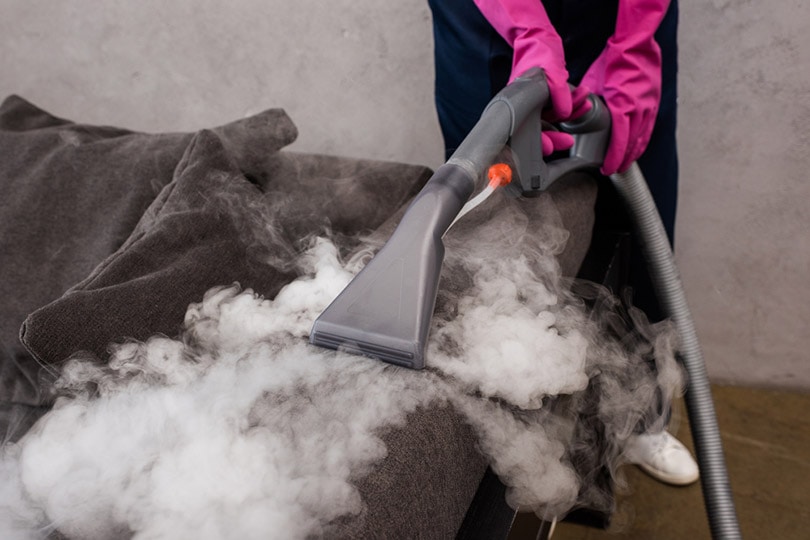
What Disinfectants Are Safe to Use on Your Bird’s Cage?
Birds have very delicate respiratory systems and are prone to environmental toxins. Therefore, you must be very careful about what products you use around your bird, as some everyday household items, like the pans you cook with1, can cause serious illness or even death. So, it should go without saying that you’ll need to be mindful of what cleaning products you use to clean your pet’s cage.
According to VCA Canada1, one cup of household chlorine bleach in one gallon of water effectively kills many disease-causing organisms. However, be very careful when using bleach, as it can release toxic fumes. Use this cleaning solution on well-ventilated rooms and keep your bird in a separate area of your home while cleaning. Do a good rinse after using any cleaning product.
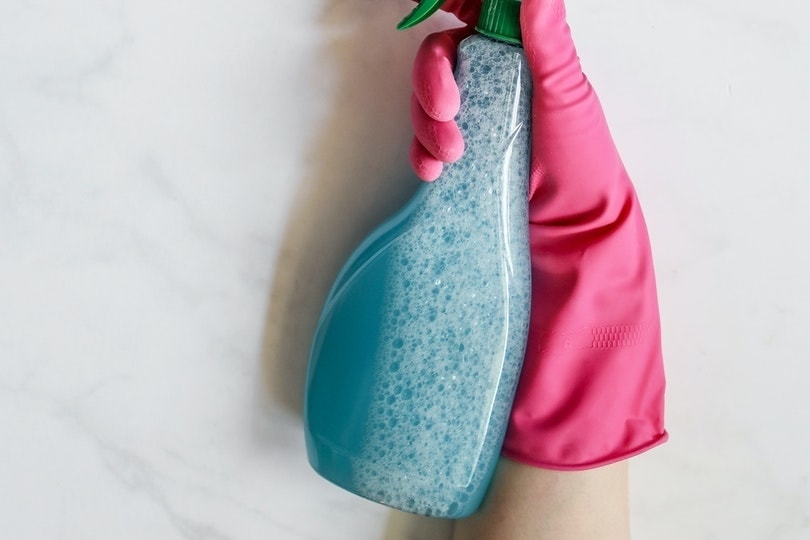
Why Is It Important to Clean Your Bird’s Cage?
You wouldn’t want to live in an environment covered in food and your waste, would you? Neither does your bird. You already know your bird has a sensitive respiratory system, so regular cleans will ensure there are no harmful bacteria particles that it will be breathing in.
Regular cleaning will keep you healthy. Birds can carry many diseases in their droppings, so it only makes sense that exposure can make you sick. Infections like cryptococcosis and histoplasmosis are found in bird droppings1 and can be spread by breathing in the microscopic fungi in your bird’s poop.
Conclusion
You must set aside time every day, week, and month to do a good cleaning of your bird’s cage. Doing so will not only prevent the build-up of bird droppings but also keep you and your pet safe. Maintaining a clean and healthy environment only takes a few minutes out of your day, but it can make all the difference in your pet’s health. Try not to skip out on your daily or weekly cleaning jobs, as they will make the big monthly cleans much easier and faster.
Featured Image Credit: Setiawan Heriadi, Pixabay


